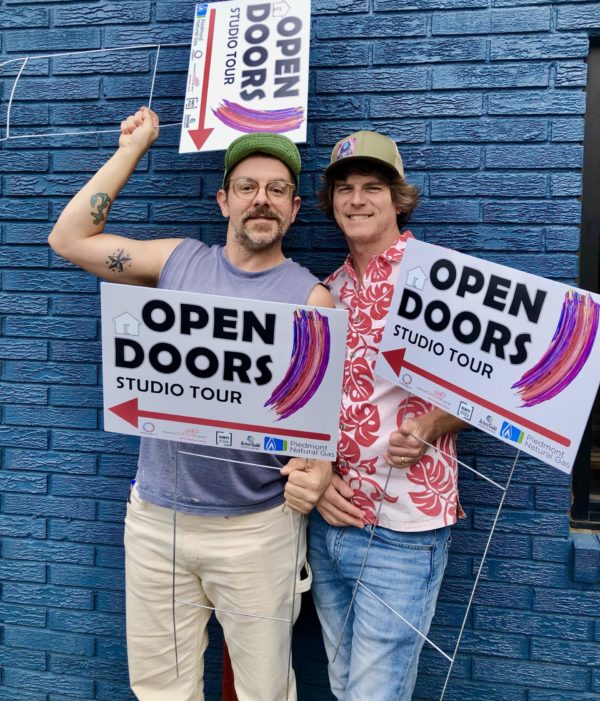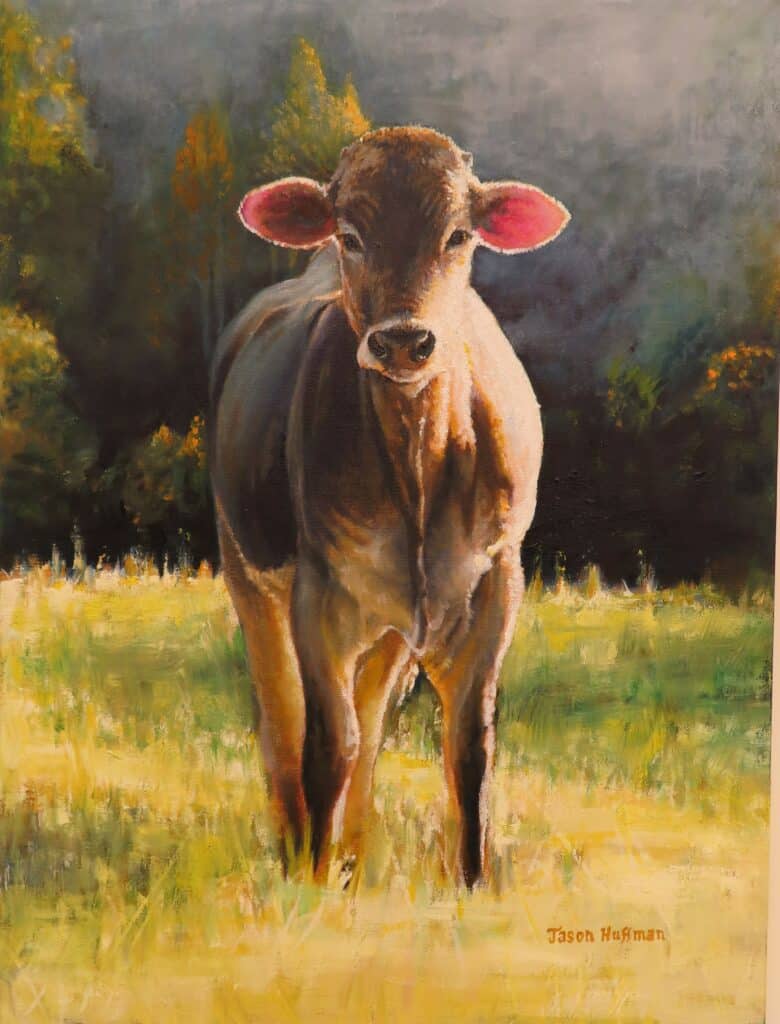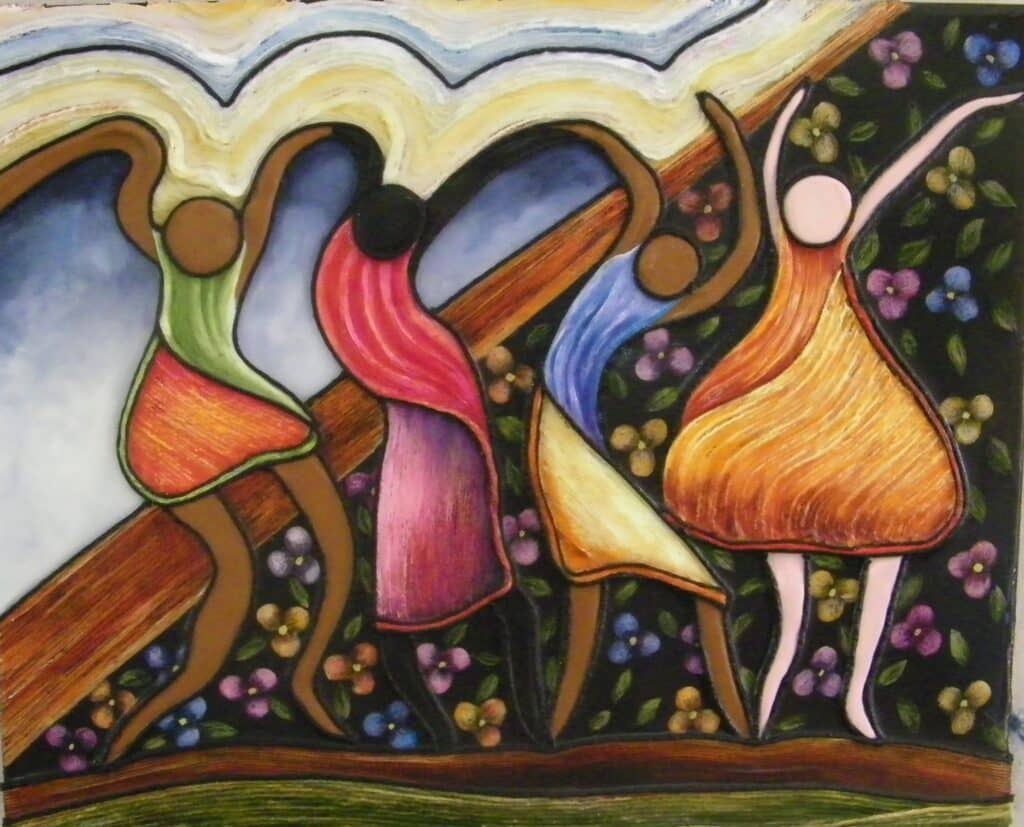BEFORE THE OPEN DOORS WEEKEND:
- Have your space clean and professional-looking. Yes, it is a working space, but make it inviting for people to enter.
- Set up a demonstration area that is safe and effective.
- Kidproof the studio and store away solvents, sharp tools, etc.
- Look around your space for any trip hazards.
- Have a substantial amount of presentable work and have it nicely displayed. The key is to offer enough in a presentable way without overwhelming. Make it look fresh: they do not know how long that piece has been sitting around.
- Label the work in your studio with your name and price, or NFS.
- Have bios, statements, and newspaper articles in your career book for customers to flip through.
- Leave out an empty sketchpad, notebook, or guestbook in a prominent place and politely suggest that your guests sign in if they’d like to be notified of your upcoming events. Leave space for comments — people love to leave their two cents.
- Have extra business cards in your studio for interested visitors to take.
- Try to make important notes immediately regarding your visitors as soon as possible after they leave.
- Have plenty of packing materials for your sold work.
- Do you want to provide seating for people to relax? Sometimes visitors sitting in a studio space will spot something they didn’t see while walking around.
BE PREPARED TO TALK ABOUT YOUR WORK:
Greet everyone who comes in and introduce yourself. Talk to them if they seem uncomfortable, or leave them alone to look at the art. A few simple opening lines that you can use throughout the day will help to start conversations.
You can build conversations by:
- Asking visitors how they are enjoying the tour.
- Talking about your work, what inspires you, what makes your work special (especially things that might not be immediately obvious).
- Ask if they would like to see how you make your work.
- Talking about other shows you are participating in.
Once you get the conversation started, it will likely flow fairly naturally. Remember, your visitors made a specific trip to your studio because they were interested in your work.
FOOD: KEEP IT SIMPLE:
You don’t want dip and crumbs on your artwork. Wine? If serving wine in your space, make sure that you keep it in your control. Serving refreshments is not always practical. And it won’t be right for everyone. But sometimes simple refreshments can help set a mood and make visitors to your studio feel welcome.
Be sure to serve simple, easy-to-eat or drink items. You don’t want people to be too distracted by the food or drink, and you don’t want to serve anything that might make a mess in your studio.
- Avoid anything sticky or messy that might get on your work.
- Avoid anything that requires concentration to eat, that would take visitors’ attention away from your work.
- Avoid anything difficult to serve. You want to concentrate on talking with your customers, you don’t want to spend the day focused on serving food.
- It is not about the expense, it is about the thought. And don’t forget a trashcan.
DURING THE OPEN DOORS WEEKEND:
You must be present at your studio during the Open Doors hours. Remember the goal of the studio tour is to invite people in to see your creative process and the work you have made.
YOU’LL NEED AN ASSISTANT:
Don’t try to do a studio tour by yourself without an assistant. If your studio gets busy or you need a quick break, you’ll be happy to have the help. Do be careful to avoid taking long or frequent breaks, though, because your visitors have come to see you (the artist) in your workspace. But if you’ve been able to have a quick break when you need one, you’ll be able to give visitors your full attention. Likewise, if your studio gets busy, your assistant will be able to speak with guests while you’re busy with others.
SAFETY, INSURANCE, AND LIABILITY:
While accidents can happen anywhere, they are more likely to happen in areas that have potentially hazardous materials, processes, or equipment. Because many studios are within personal homes, artists should refer to their homeowner’s policy to assess the coverage they have. Usually, public liability/business insurance is not included, so you will need to investigate the level of coverage that you have. While providing refreshments at your event is a great way to attract and keep patrons, liability issues can arise if items are homemade. It’s best to keep refreshments store-bought.




